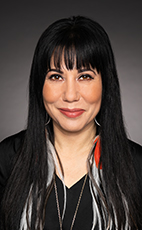44th Parl. 1st Sess.
May 2, 2023 10:00AM
- May/2/23 3:03:06 p.m.
- Watch
Mr. Speaker, it is essential we support scientists and researchers across Canada so we can position ourselves as a global leader in the research ecosystem.
Can the Minister of Innovation, Science and Industry talk about the recent announcement made through the first research excellence fund and how this funding will support important research initiatives with universities across the country?
59 words
- Hear!
- Rabble!
- add
- star_border
- share
- May/2/23 4:24:59 p.m.
- Watch
Madam Speaker, we are doing a lot, but I will mention two key things.
One is rapid housing, which is getting a lot of housing for our most vulnerable, for new Canadians, and they are built very quickly. If we talk to mayors right across this country, they will tell members that this is a very successful program, which is why we are about to introduce the third stage. The second thing is the $4-billion housing accelerator fund, which is going to help incentivize cities to eliminate a lot of their red tape and a lot of their long timelines to get housing built in the cities.
Those are two key things that we have put into place. There are many other initiatives, but I have run out of time.
131 words
- Hear!
- Rabble!
- add
- star_border
- share
- May/2/23 6:53:25 p.m.
- Watch
Madam Chair, as I mentioned, young people are on the front lines of this issue. They need to be supported. They need to be supported in this life-saving work. They need mentorship. They need to work with youth as peers and help each other stay safe.
We have so many kids who age out of care onto the streets. Do members know who is stepping up? It is other young people with common experiences. We need to immediately invest in places for kids aging out of care. We need to support youth organizations that are doing this frontline work to lift people up.
That is what we need. The government talks a good game, but it needs to start investing in youth-led initiatives that save the lives of other young people.
133 words
All Topics
- Hear!
- Rabble!
- add
- star_border
- share
- May/2/23 8:07:16 p.m.
- Watch
Mr. Chair, I believe that in her heart, the member really wants to move the issues forward.
Most recently, with the Coalition on Murdered and Missing Indigenous Women and Girls in B.C., in Vancouver's Downtown Eastside, our community has been talking about this issue. In fact, it was in Vancouver's Downtown Eastside where the first memorial march was led back in the day, so many years ago, when I was a community legal advocate. Fewer than 20 people showed up for that march, and now we see it across the country.
That being said, here are some of the issues people raised at that meeting. They are calling for the red dress alert to be implemented, of course, but beyond that they also want to see a national summit led and organized by indigenous women, and they want to see the continued conversation about a missing persons database. These are some of the things that need to be done, and they need to be done now. In addition, the coalition has been calling for government support to fund community people who are out there looking for missing loved ones. So often, they are just doing that work all on their own without any support anywhere.
My question for the member is this: Will the government undertake to ensure that the ideas and strategies coming from indigenous organizations, like the Coalition on Murdered and Missing Indigenous Women and Girls in B.C., and family members are supported? Will it actually fund those initiatives and implement them?
258 words
All Topics
- Hear!
- Rabble!
- add
- star_border
- share
- May/2/23 10:05:37 p.m.
- Watch
Madam Chair, I believe that successive generations of government policies that have been barriers to indigenous people and indigenous communities, in almost every aspect of their lives, have led to the disproportionate challenges today.
My own view is that more top-down, big-government bureaucracies and money getting lost in layers of administration is actually not making any change. I think the emphasis should be on the bottom up. It should be on indigenous-led and -directed initiatives, programming and organizations, and I think that the federal government, over generations, has proven that. In very core ways, it has failed indigenous people, and that is because there are layers of bureaucracy and barriers to indigenous people and communities being able to control their own lives and to be able to be self-determining, to be able to be self-sufficient and to have opportunities and hope for the future.
However, the key thing is that I think any and all changes must be driven by indigenous communities, indigenous leaders and indigenous organizations, for indigenous communities.
175 words
All Topics
- Hear!
- Rabble!
- add
- star_border
- share
- May/2/23 10:32:10 p.m.
- Watch
Madam Chair, it is with a great deal of emotion that I rise this evening on behalf of the Bloc Québécois to close this debate after my incredible colleague from Manicouagan, who spoke earlier this evening.
From the outset, I would like to remind the House that our political party has repeatedly reiterated its commitment to being an ally to the first nations. We believe that it is critical that we collectively remember all missing and murdered indigenous women, girls and 2SLGBTQIA persons to honour their memory.
I will go over some of our proposals, and then I will talk about Red Dress Day. I will close my speech by reminding the House of the origin of the National Inquiry into Missing and Murdered Indigenous Women and Girls.
First, we called for the creation of the National Inquiry into Missing and Murdered Indigenous Women and Girls and we supported its findings. We continue to support initiatives aimed at ending the impact of Canadian colonialism on indigenous peoples.
The government has been slow to implement some calls to justice. Although it publicly underlines the importance of reconciliation, the chronic underfunding of indigenous people in Canada continues. The federal government's inability to make sufficient investments in social and affordable housing, health services and infrastructure, water in particular, in indigenous communities has devastating consequences for indigenous people, their families and communities, in particular indigenous women and girls.
Massive efforts and investments must be made to honour the federal government's commitments and put an end to the crisis being experienced by indigenous women. The investments being made are insufficient to erase the harmful effects of colonialism. The resulting trauma is still deeply felt today and keeps women in particular trapped in a cycle of violence and vulnerability.
The Bloc Québécois is calling for true reconciliation. It must be social, cultural and economic. It must enable indigenous people to free themselves from the harms they were subjected to, and it must be done with the communities, not by imposing a Canadian vision of what reconciliation is.
The Bloc Québécois has always been a strong advocate of nation-to-nation discourse, and we reiterate that position once again. May 5 is Red Dress Day, the National Day of Awareness for Missing and Murdered Indigenous Women and Girls. It is a time to honour missing and murdered indigenous women, girls and 2SLGBTQIA+ people. We believe that one way to do this is by accelerating the implementation of the calls to action of the National Inquiry into Missing and Murdered Indigenous Women and Girls and the United Nations Declaration on the Rights of Indigenous Peoples.
Second, Red Dress Day is about honouring the victims, raising awareness of this crisis and encouraging governments to take action to address racist and gender-based violence against indigenous people in Canada.
I saw the REDress Project, which is now a permanent exhibit at the Canadian Museum for Human Rights, when I visited Winnipeg for a symposium on human trafficking and the resulting sexual exploitation that disproportionately affects indigenous women and girls, who often wind up missing or murdered.
Third, I would like to talk about how the national inquiry came about. In 2014, the issue finally broke into the headlines as a potential systemic problem after the RCMP unveiled its figures on the number of missing and murdered indigenous women and girls. The numbers speak for themselves. A total of 1,007 indigenous women and girls went missing or were murdered between 1980 and 2012. There are still 105 women unaccounted for, who disappeared under unexplained or suspicious circumstances. Between 2004 and 2014, as the murder rate fell across Canada, six times more indigenous women and girls were murdered than non-indigenous. Taking advantage of the momentum generated by the Truth and Reconciliation Commission's work, many groups held demonstrations on October 4, 2014, demanding a national inquiry into the causes of the disappearance and murder of indigenous women and a national action plan.
It is also important to note that there is still a disproportionate number of indigenous women in Canadian prisons, many of whom were victims of violence themselves. That being said, pressure was mounting on the federal government, which until that point had ignored all calls for action.
Less than a year later, in 2015, the Truth and Reconciliation Commission of Canada called for a national inquiry into the disproportionate victimization of indigenous women and girls.
On June 3, 2019, the National Inquiry into Missing and Murdered Indigenous Women and Girls released its final report, “Reclaiming Power and Place”, after more than two years of gathering testimony from indigenous knowledge keepers, experts, and 1,484 survivors and family members of missing and murdered women and girls.
The report contains 231 separate calls for justice. These are legal imperatives, not mere recommendations. They call for immediate action and are directed at indigenous and non-indigenous governments, institutions, social service providers, industries and Canadians from all walks of life.
In Canada, according to 2018 figures, 25.1% of non-indigenous women reported having been physically or sexually abused by an intimate partner, while this percentage rises to 43.7% among indigenous women. Furthermore, 38.2% of non-indigenous women have been physically or sexually abused by someone other than an intimate partner, but this percentage rises to 54.9% among indigenous women.
Internationally, Canada finally signed on to the United Nations Declaration on the Rights of Indigenous Peoples on June 21, 2021, when the related act received royal assent. This is one of the most important human rights issues facing Canada. The purpose of the act is to affirm the UN declaration as an international human rights instrument that can help interpret and apply Canadian law. This act requires the Government of Canada, in consultation and co-operation with indigenous peoples, to take all measures necessary to ensure that the laws of Canada are consistent with the declaration, to prepare and implement an action plan to achieve the objectives of the declaration, and to table an annual report on the progress made in aligning federal laws with the action plan.
The act requires that the action plan include measures to address injustices, combat prejudice and eliminate all forms of violence, racism and discrimination against indigenous peoples, including elders, youth, children, persons with disabilities, women, men and two-spirit and gender-diverse persons. It aims to to promote mutual respect and understanding, as well as good relations, including through human rights education. The plan must include measures related to the monitoring, oversight, follow-up, recourse or remedy or other accountability with respect to the implementation of the declaration. This action plan must also include measures for monitoring the implementation of the plan itself and for reviewing and amending the plan.
In their descriptions of encounters, families and survivors who spoke at the national inquiry consistently linked their experiences to colonialism, both historic and modern forms, in one of the following four ways: historical, multi-generational and inter-generational trauma; social and economic marginalization; maintaining the status quo; institutional lack of will; and refusal to recognize the expertise of indigenous women and girls and their capacity to act. The Canadian government and the clergy planned the collective trauma with the ultimate goal of driving all indigenous communities to extinction. Those communities have since been left to deal with the consequences alone.
We might say that indigenous communities need to fight. Quebeckers and Canadians alike need to be aware of the collective trauma experienced in these communities, understand it and make sure these atrocities never happen again. In listening to the testimony of indigenous women, Quebec Native Women counted four types of violence: structural violence, institutional violence, family violence and personal violence. That last type of violence covers actions such as physical violence, psychological manipulation and financial control, and it involves individuals.
In conclusion, the government must act on the report of the National Inquiry into Missing and Murdered Indigenous Women and Girls on the occasion of Red Dress Day, which seeks to raise awareness of this problem. We are calling on the government to take concrete measures to protect indigenous populations, to recognize the disproportionate level of violence faced by indigenous women and to stand in solidarity with them. We must commit to putting an end to racism and systemic violence against indigenous women, girls and two-spirit people. As elected officials, we must take action and not settle for a simple speech about this situation.
I would like to point out one last thing because the numbers speak for themselves. In a report released in May 2014, the RCMP documented 1,181 cases involving indigenous women, including 1,017 who were murdered and 164 who went missing, between 1980 and 2012 when this all happened. Some estimate that more than 4,000 indigenous women are missing. According to the national inquiry, it is impossible to determine the exact number of murdered and missing women.
The fake feminism must stop, and there must be action.
1527 words
All Topics
- Hear!
- Rabble!
- add
- star_border
- share
- menumenu
- notificationsnotifications
- home
- mailmail
- searchsearch








